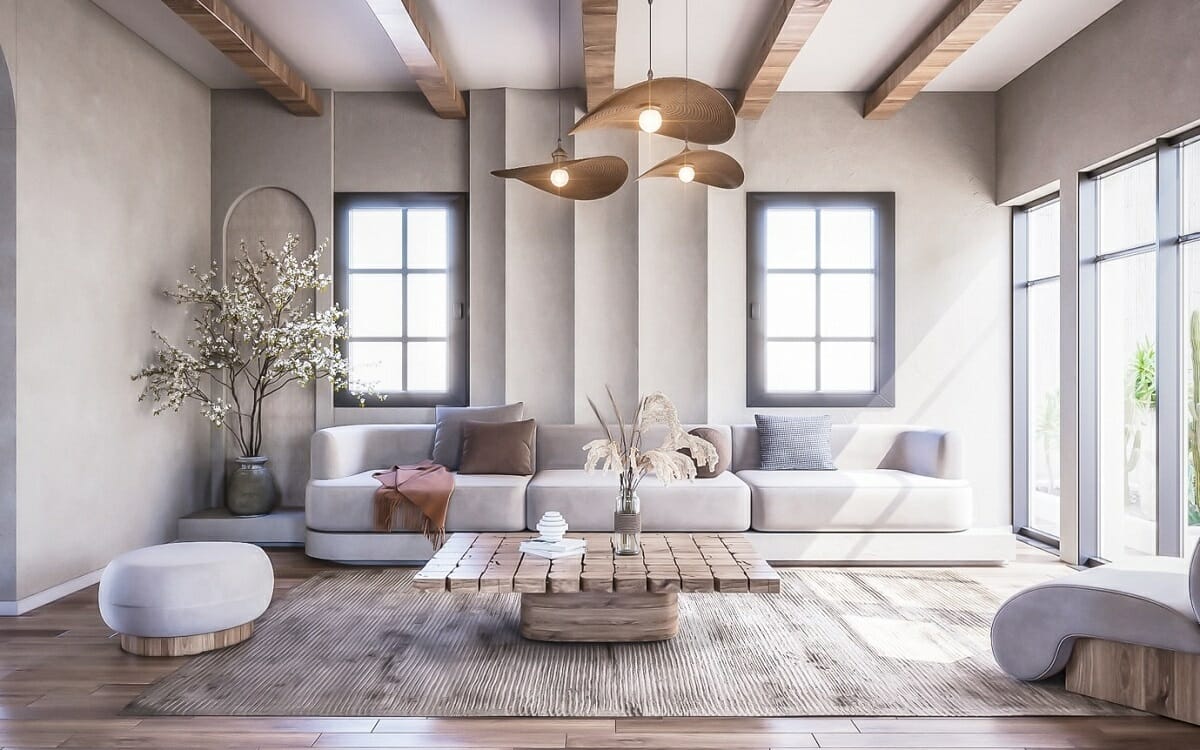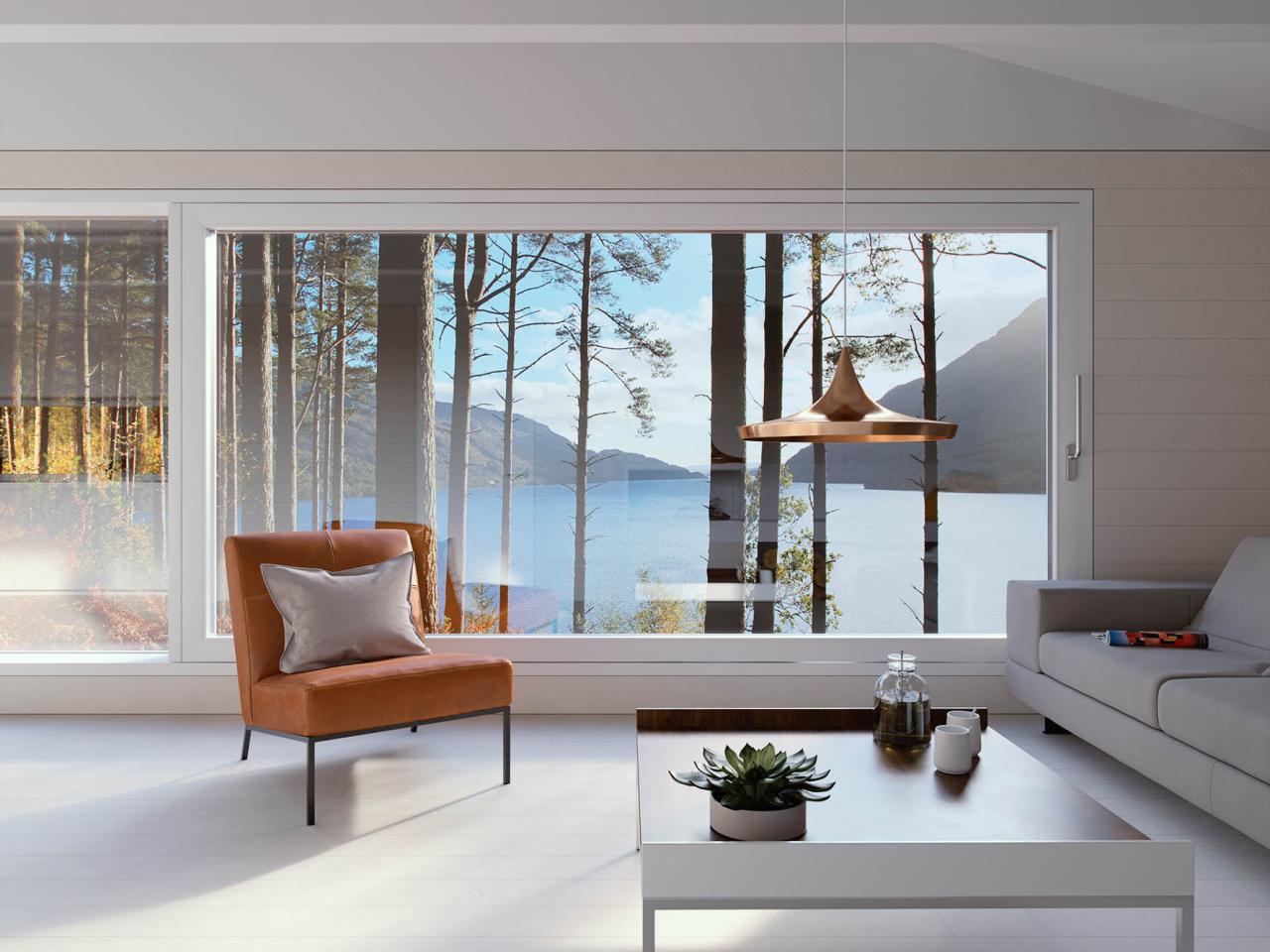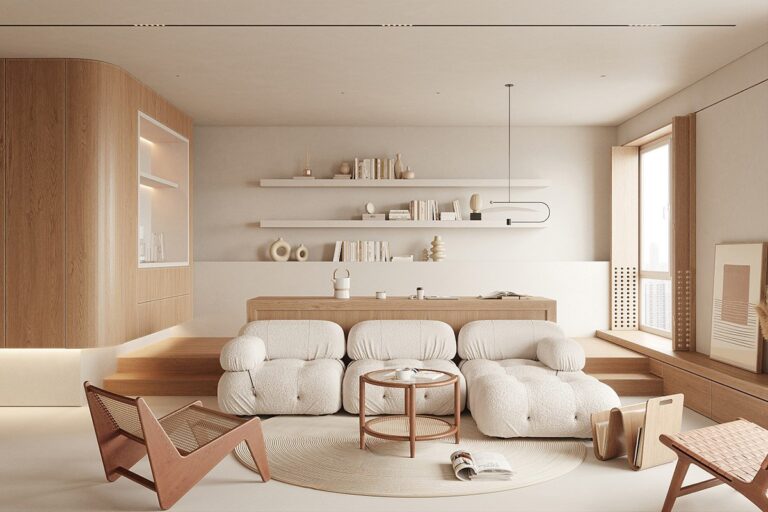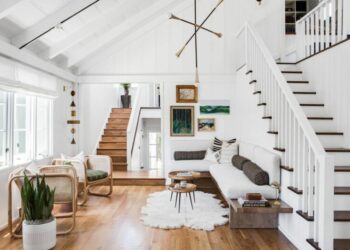Minimalist home aesthetics have moved far beyond being a fleeting trend; they represent a profound shift towards intentional living, focusing on decluttering, simplicity, and purposeful design. It’s about creating spaces that bring calm, enhance well-being, and reduce the often overwhelming distractions of modern life. This comprehensive guide delves into the core tenets of minimalist home design, exploring its origins, key elements, psychological benefits, and practical application, all while keeping a keen eye on principles that appeal to a wide audience and optimize for online search visibility.
The concept of minimalism isn’t new. Its roots can be traced to various philosophical and artistic movements throughout history, from ancient Zen Buddhism with its emphasis on emptiness and contemplation to the “less is more” mantra of modernist architects like Mies van der Rohe. In recent decades, however, minimalism has gained renewed traction as a counter-cultural response to consumerism and the overwhelming influx of information and possessions. For many, adopting a minimalist home aesthetic isn’t merely about interior decoration; it’s a lifestyle choice that fosters clarity, reduces stress, and allows for greater appreciation of what truly matters. It’s about designing environments that support peace, productivity, and personal growth, rather than merely accumulating things.
Core Principles of Minimalist Aesthetics

At its heart, minimalist design is guided by a set of foundational principles that aim to create serene, highly functional, and visually harmonious spaces.
A. Less is More: The Essence of Simplicity:
* Purposeful Selection: Every item in a minimalist home serves a specific purpose or holds significant sentimental value. There’s a conscious decision to avoid extraneous objects, decorations, or furniture that don’t add to the functionality or beauty of the space.
* Uncluttered Surfaces: Clear countertops, tabletops, and floors are hallmarks of minimalism. This creates a sense of openness, reduces visual noise, and makes cleaning easier.
* Eliminating Duplication: Owning fewer items, and avoiding multiple versions of the same thing (e.g., numerous coffee mugs, several similar decorative vases) helps reduce overall clutter and encourages mindful consumption.
B. Functional Design:
* Utility as Priority: Furniture and decor are chosen primarily for their utility. A minimalist sofa isn’t just aesthetically pleasing; it’s comfortable and durable. A dining table is sturdy and serves its purpose efficiently.
* Multi-functional Pieces: Items that can serve more than one purpose are highly valued in minimalist homes, especially in smaller spaces. Examples include ottomans with storage, sofa beds, or extendable dining tables.
* Ergonomics and Comfort: While simplicity is key, comfort is never sacrificed. Pieces are designed to be comfortable and support daily living activities effectively.
C. Neutral Color Palettes:
* Calming Foundation: Minimalist homes predominantly use neutral colors like whites, off-whites, greys, and muted earth tones (beiges, light browns). These colors create a serene and spacious backdrop.
* Highlighting Texture and Form: A neutral palette allows the textures of materials (wood grain, linen, concrete) and the forms of furniture to stand out, adding subtle depth and interest without visual clutter.
* Strategic Pops of Color: While neutrals dominate, carefully chosen, minimal accents of color (e.g., through a single piece of art, a throw pillow, or a plant) can add personality and warmth without overwhelming the space.
D. Emphasis on Natural Light and Open Space:
* Maximizing Illumination: Large windows, sheer curtains, and reflective surfaces (like mirrors or polished floors) are used to maximize natural light, making spaces feel brighter, larger, and more inviting.
* Open Floor Plans: Where possible, open-concept layouts are favored to promote a sense of spaciousness and fluid movement between areas, minimizing physical barriers.
* Strategic Lighting: When artificial light is needed, it’s often layered and functional, using recessed lighting, simple fixtures, and task lighting to create different moods and highlight specific areas.
E. Quality Over Quantity:
* Investment in Durability: Instead of numerous cheap items, minimalist homeowners invest in a few high-quality, durable pieces that will last for years. This reduces waste and often saves money in the long run.
* Timeless Appeal: Well-made, classic designs tend to be timeless, avoiding the need to constantly update with fleeting trends. This aligns with the long-term sustainability aspect of minimalism.
* Craftsmanship and Materials: Appreciation for good craftsmanship and the inherent beauty of natural materials (solid wood, natural stone, quality fabrics) is central to this principle.
Psychological and Well-being Benefits
Beyond its aesthetic appeal, minimalist home living offers significant psychological advantages, contributing to a calmer mind and a more fulfilling life.
A. Reduced Stress and Anxiety:
* Visual Calm: An uncluttered environment reduces visual stimuli, which can lessen cognitive load and promote a sense of calm. Fewer things to look at means less mental processing.
* Less Decision Fatigue: With fewer possessions, there are fewer decisions to make about what to wear, where to put things, or what to buy next. This frees up mental energy for more important tasks.
* Sense of Control: Gaining control over one’s physical environment can translate into a greater sense of control over one’s life, reducing feelings of overwhelm.
B. Increased Focus and Productivity:
* Elimination of Distractions: A minimalist workspace or living area has fewer distractions, allowing for better concentration on tasks, hobbies, or conversations.
* Clarity of Mind: A clear physical space often leads to a clearer mental space, fostering better problem-solving and creative thinking.
* Efficient Routines: Without excessive clutter, daily routines become smoother and more efficient, reducing wasted time searching for items.
C. Enhanced Well-being and Mindfulness:
* Promoting Presence: A minimalist environment encourages mindfulness and living in the present moment, as there are fewer distractions pulling attention away.
* Appreciation for Experiences: When the focus shifts from accumulating possessions, more value is placed on experiences, relationships, and personal growth.
* Better Sleep: A calm, uncluttered bedroom can significantly improve sleep quality by reducing mental stimulation before bed.
* Easier Maintenance: Less to clean and organize means more free time for self-care, hobbies, and social activities.
D. Financial Freedom and Conscious Consumption:
* Reduced Spending: Adopting a minimalist mindset naturally leads to less impulsive buying and a focus on essential purchases, saving money.
* Investment in Quality: Money previously spent on numerous inexpensive items can be redirected towards fewer, high-quality, durable pieces that offer better long-term value.
* Awareness of Value: Minimalists often become more aware of the true value of items, considering their utility, longevity, and impact before purchasing.
Key Elements and Practical Application
Translating minimalist principles into a lived space requires intentional choices in every aspect of home design and organization.
A. Furniture Selection:
* Clean Lines and Simple Forms: Opt for furniture with straight lines, geometric shapes, and minimal ornamentation.
* Neutral Upholstery: Sofas, chairs, and beds often feature neutral-colored upholstery (grey, beige, white) in natural fabrics like linen, cotton, or wool.
* Natural Materials: Wood (light or dark), metal, and sometimes glass are preferred. Look for solid, well-crafted pieces.
* Proportion and Scale: Choose furniture that fits the scale of the room without overcrowding it. Leave ample negative space around pieces.
B. Storage Solutions:
* Integrated Storage: Built-in cabinetry, wall-mounted shelving units, and under-bed storage are excellent ways to keep items out of sight and maintain clear surfaces.
* Closed Storage: Prefer closed cabinets and drawers over open shelving to minimize visual clutter and hide everyday items.
* Functional Baskets and Bins: For items that need to be easily accessible, use simple, aesthetically pleasing baskets, bins, or boxes to contain them.
* Vertical Storage: Utilize wall space with tall, narrow shelving or wall-mounted cabinets to maximize storage without taking up floor space.
C. Color Palette and Lighting:
* Dominant Neutrals: Whites, off-whites, warm greys, and muted earth tones form the base. These create a tranquil and expansive feel.
* Subtle Textural Variety: Introduce depth through varied textures in natural fabrics (linen, wool, cotton), wood grains, and woven elements, rather than relying on bold colors or patterns.
* Layered Lighting: Combine ambient lighting (general room illumination), task lighting (for specific activities), and accent lighting (to highlight art or architectural features) using simple, unobtrusive fixtures.
* Dimmers: Install dimmers to control light intensity and create different moods throughout the day.
D. Decor and Accessories:
* Curated Art: Select a few impactful pieces of art that resonate with you, rather than many small items. Often, a large, single piece makes a stronger statement.
* Strategic Greenery: Introduce plants for a touch of natural color, improved air quality, and biophilic connection. Choose simple, elegant planters.
* Meaningful Objects: Display only items that hold significant meaning, tell a story, or bring genuine joy. These become focal points without creating clutter.
* Absence of Clutter: Resist the urge to fill every empty space. Negative space is a crucial design element in minimalism, allowing the eye to rest and appreciating the objects that are present.
E. Kitchen and Bathroom Minimalism:
* Streamlined Appliances: Choose integrated or minimalist-designed appliances that blend seamlessly with cabinetry.
* Hidden Storage: Maximize drawer organizers, pull-out pantries, and wall-mounted spice racks to keep counters clear.
* Limited Utensils and Cookware: Keep only the essential cooking tools and dishes, neatly stored away.
* Simple Fixtures: Opt for sleek, modern faucets and showerheads.
* Product Decanting: Transfer toiletries and cleaning supplies into uniform, refillable bottles for a more cohesive and less cluttered look.
Transitioning to a Minimalist Home

Embracing minimalism is a journey, not an overnight transformation. It requires intentionality, patience, and a willingness to reassess one’s relationship with possessions.
A. The Decluttering Process:
* Start Small: Begin with one room, or even one drawer or cabinet, to avoid feeling overwhelmed.
* The “Four-Box Method”: Label boxes “Keep,” “Donate,” “Trash,” and “Relocate.” Go through items and assign them to a box.
* The “One-Year Rule”: If you haven’t used an item in a year (or a season for seasonal items), consider letting it go.
* Sentimental Items: Be intentional with sentimental items. Take photos, create a digital archive, or designate a small, dedicated box for truly cherished mementos.
* Digital Decluttering: Extend minimalism to digital spaces by organizing files, deleting unused apps, and managing email subscriptions.
B. Mindful Consumption Habits:
* “One In, One Out” Rule: When you buy a new item, commit to donating or discarding an old one that serves a similar purpose.
* Conscious Shopping: Before making a purchase, ask yourself: “Do I truly need this? Does it add value to my life? Do I already own something similar?”
* Prioritize Experiences Over Things: Shift focus from acquiring material possessions to investing in experiences, learning, and relationships.
* Research Before Buying: Invest time in researching quality, durability, and ethical sourcing for items you do decide to purchase.
C. Maintaining the Minimalist Aesthetic:
* Daily Tidying: Dedicate a few minutes each day to putting things back in their place to prevent clutter from accumulating.
* Regular Purges: Periodically revisit your belongings and declutter areas that tend to attract items (e.g., mail, entryway tables).
* Shared Spaces: For households with multiple members, establish clear rules and designated storage areas for everyone’s belongings to maintain order.
* Adapting to Life Changes: Minimalism is flexible. As life evolves (e.g., new family members, hobbies), adapt your minimalist approach to accommodate these changes without compromising core principles.
Variations and Nuances of Minimalist Design
While core principles remain consistent, minimalist aesthetics can manifest in subtle variations, reflecting personal preferences and cultural influences.
A. Scandinavian Minimalism:
* Warmth and Hygge: Often incorporates lighter wood tones, soft textiles (wool, sheepskin), and natural light to create a cozy, inviting atmosphere.
* Functionality and Simplicity: Strong emphasis on practical, well-designed furniture with clean lines.
* Muted Colors with Natural Accents: Predominantly white or light grey walls, often with touches of muted blues or greens, and abundant natural elements.
B. Japanese Minimalism (Wabi-Sabi Influence):
* Imperfection and Authenticity: Embraces the beauty of imperfection, natural decay, and asymmetry. Materials are often left in their natural, raw state.
* Connection to Nature: Strong emphasis on natural materials, textures, and bringing elements of the outdoors in.
* Harmony and Balance: Focus on creating balanced compositions with clear sightlines and an appreciation for negative space.
* Mindful Living: Closely tied to a philosophy of conscious living and appreciating the fleeting nature of things.
C. Industrial Minimalism:
* Raw Materials: Showcases exposed brick, concrete, steel, and sometimes reclaimed wood, celebrating the raw, unfinished aesthetic of industrial spaces.
* Openness and High Ceilings: Often found in loft conversions, utilizing existing architectural features.
* Functional Lighting: Industrial-style fixtures, often metal and exposed bulbs, serve a utilitarian purpose.
* Limited Furnishings: Sparse furniture, often made of metal or dark wood, to emphasize the vastness of the space.
D. Bohemian Minimalism:
* Curated Eclecticism: A blend of minimalist principles with carefully chosen, meaningful bohemian elements (e.g., vintage rugs, global textiles, an abundance of plants).
* Warmth and Texture: While colors are still somewhat muted, there’s more emphasis on rich textures and layers to create a cozy, lived-in feel.
* Personal Expression: A more relaxed approach to minimalism, allowing for more personal expression through unique, collected items, but still avoiding clutter.
The Future of Minimalist Home Aesthetics
As global concerns around sustainability and well-being grow, minimalist home aesthetics are poised to evolve further, integrating even more deeply with technology and eco-conscious practices.
A. Integrated Smart Technology:
* Seamless Integration: Smart home devices will become even more seamlessly integrated and hidden, controlled by voice or subtle interfaces, reinforcing the uncluttered aesthetic.
* Automated Simplicity: Technology will automate routine tasks, further reducing mental load and contributing to a sense of effortlessness.
* Wellness Tech: Devices that monitor air quality, lighting, and sleep will be discreetly integrated, enhancing well-being without adding visual clutter.
B. Hyper-Personalization and Adaptability:
* Modular and Transformable Furniture: As living spaces become smaller and more dynamic, furniture designed to adapt and transform will be essential for minimalist living.
* Customizable Systems: Built-in storage and organizational systems that can be easily reconfigured to suit changing needs will be highly valued.
* Data-Driven Design: Future minimalist homes might use data about occupant behavior to optimize layouts and storage, creating truly bespoke efficiency.
C. Enhanced Sustainability and Circularity:
* Beyond “Less”: The focus will move beyond simply owning less to understanding the entire lifecycle of products – from ethical sourcing to end-of-life recycling or composting.
* Bio-Materials and Upcycling: Greater use of innovative bio-materials and a continued emphasis on upcycling and repurposing existing items will be central.
* Shared Economies: The rise of shared resources (tool libraries, shared appliances) could further reduce the need for individual ownership of certain items, supporting minimalist principles on a community level.
Conclusion
Minimalist home aesthetics offer a compelling and timely blueprint for intentional living in an increasingly complex world. By championing simplicity, functionality, and a conscious relationship with possessions, it provides a pathway to reduced stress, enhanced well-being, and greater financial freedom. It’s a design philosophy that encourages us to critically examine what truly adds value to our lives and bravely discard the rest. The beauty of minimalism lies not in emptiness, but in the deliberate curation of space that allows for clarity, purpose, and a deeper appreciation for the essential elements of a well-lived life. As we navigate the future, embracing minimalist principles in our homes promises to create sanctuaries that nurture our minds, bodies, and souls, contributing to a more sustainable and peaceful existence for all.









